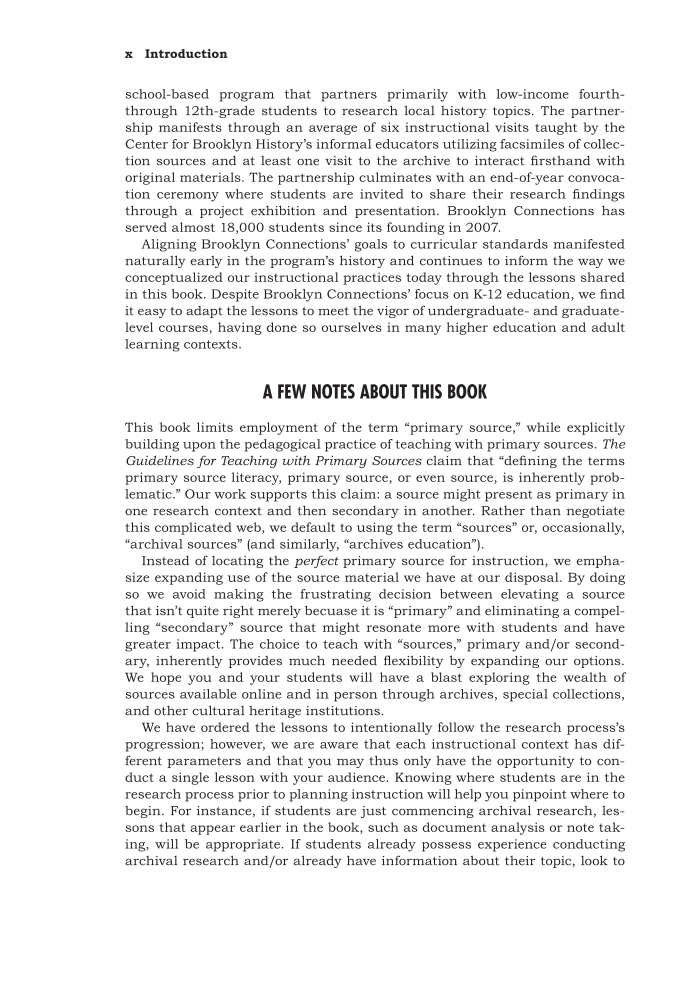x Introduction school-based program that partners primarily with low-income fourth- through 12th-grade students to research local history topics. The partner- ship manifests through an average of six instructional visits taught by the Center for Brooklyn History’s informal educators utilizing facsimiles of collec- tion sources and at least one visit to the archive to interact firsthand with original materials. The partnership culminates with an end-of-year convoca- tion ceremony where students are invited to share their research findings through a project exhibition and presentation. Brooklyn Connections has served almost 18,000 students since its founding in 2007. Aligning Brooklyn Connections’ goals to curricular standards manifested naturally early in the program’s history and continues to inform the way we conceptualized our instructional practices today through the lessons shared in this book. Despite Brooklyn Connections’ focus on K-12 education, we find it easy to adapt the lessons to meet the vigor of undergraduate- and graduate- level courses, having done so ourselves in many higher education and adult learning contexts. A FEW NOTES ABOUT THIS BOOK This book limits employment of the term “primary source,” while explicitly building upon the pedagogical practice of teaching with primary sources. The Guidelines for Teaching with Primary Sources claim that “defining the terms primary source literacy, primary source, or even source, is inherently prob- lematic.” Our work supports this claim: a source might present as primary in one research context and then secondary in another. Rather than negotiate this complicated web, we default to using the term “sources” or, occasionally, “archival sources” (and similarly, “archives education”). Instead of locating the perfect primary source for instruction, we empha- size expanding use of the source material we have at our disposal. By doing so we avoid making the frustrating decision between elevating a source that isn’t quite right merely becuase it is “primary” and eliminating a compel- ling “secondary” source that might resonate more with students and have greater impact. The choice to teach with “sources,” primary and/or second- ary, inherently provides much needed flexibility by expanding our options. We hope you and your students will have a blast exploring the wealth of sources available online and in person through archives, special collections, and other cultural heritage institutions. We have ordered the lessons to intentionally follow the research process’s progression however, we are aware that each instructional context has dif- ferent parameters and that you may thus only have the opportunity to con- duct a single lesson with your audience. Knowing where students are in the research process prior to planning instruction will help you pinpoint where to begin. For instance, if students are just commencing archival research, les- sons that appear earlier in the book, such as document analysis or note tak- ing, will be appropriate. If students already possess experience conducting archival research and/or already have information about their topic, look to
Document Details My Account Print multiple pages
Print
You have printed 0 times in the last 24 hours.
Your print count will reset on at .
You may print 0 more time(s) before then.
You may print a maximum of 0 pages at a time.























































































































































































